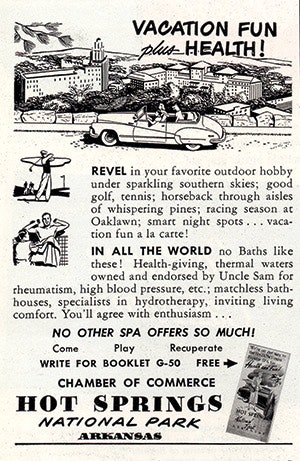 Click to enlarge
Click to enlarge
Any discussion of hot water, and more specifically hot water hydrotherapy and the relaxation and recreation it provides, ultimately begins with natural hot springs. Loosely defined as emergent groundwater heated by geothermal energy that is in excess of the ambient temperature or in excess of average human body temperature, hot springs and their close cousins, mineral springs, exist on every continent and a majority of countries.
Many are far too hot for human contact but remain important features in the natural landscape and in the grand scheme of biodiversity. Indeed, organisms that thrive in hot springs exist in some of the most extreme conditions known to biological science.
For us humans, hot springs have been part of our lives since antiquity and likely before. Our efforts to harness these remarkable bodies of hot water continue to this day. Many major cities were established around hot springs and have names that reflect their history and relationship to the water. Places like Germany's Baden-Baden, Bath in England and Spa in Belgium (the place often widely credited as the origin for the word "spa") are literally synonymous with the hot-water bathing experience.

During the 19th century, such locales were largely the provinces of the wealthy. After the turn of the 20th century with the development of national park systems, the advent of the automobile and the modern tourism industry, the pleasures of hot springs became far more accessible to the masses.
In the U.S., places such as Hot Springs National Park, Ojo Caliente, N.M., Hot Springs, Va., and the granddaddy of them all, Glenwood Springs, Colo., home to the world's largest hot spring swimming pool, have remained wildly popular destinations for those looking for a warm soak amidst beautiful natural settings and/or luxurious vacation accommodations.
The health benefits of hot springs bathing is well known to science and naturally shares much of the same profile as luxuriating in a manmade spa. Both provide treatment of joint pain, arthritis, rheumatism and even depression. Mineral hot springs, which may contain elevated concentrations of zinc, calcium, sulfur, potassium and other minerals, have long been associated with wellness.
Although still a developing branch of scientific research, "balneology," the study of bathing as a health treatment, which has been practiced for centuries especially in Japan and Europe, continues to uncover potential and proven therapeutic benefits including treating skin diseases and even high blood pressure.
Still, it's the "hot" in hot springs that remains the star attraction. A 2014 paper published in the North American Journal of American Sciences suggested that the heat and pressure in water work together to lessen our perception of pain by blocking pain receptors.
Fortunately, no one needs to be a research scientist to know that soaking in a hot spring and/or mineral bath can be an enormously pleasant experience — one that gave rise to the hot water industry that employs many of us today!











































